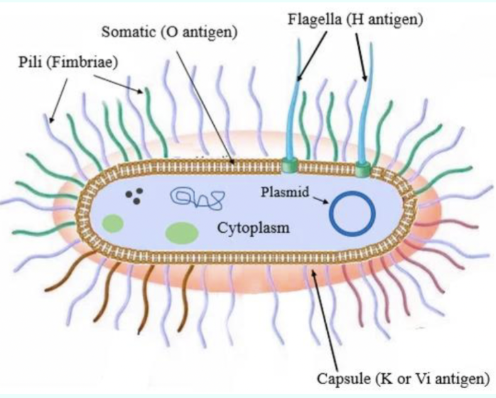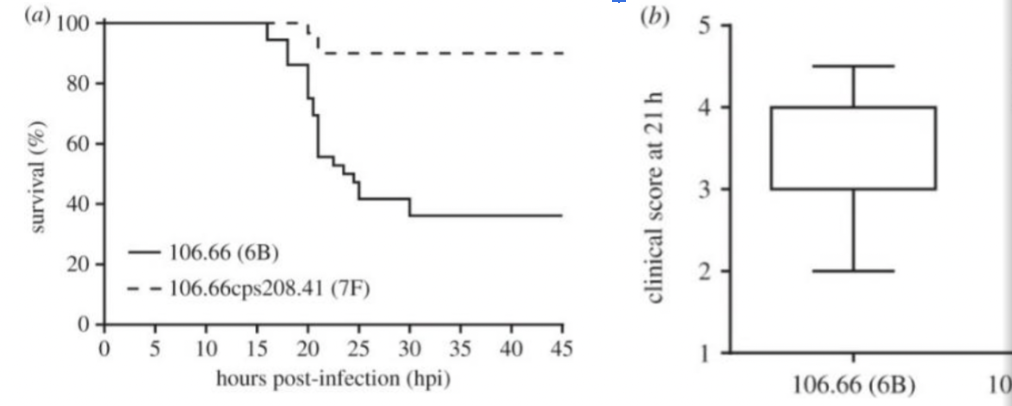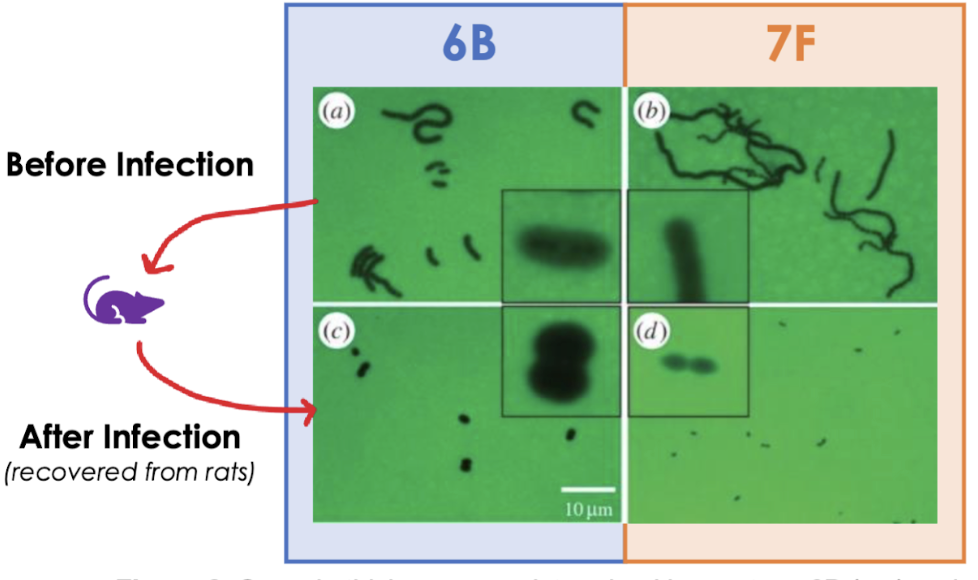chapter 12.2 case study, streptococcus pneumoniae capsule determines disease severity in experimental pneumococcal meningitis
1/5
There's no tags or description
Looks like no tags are added yet.
Name | Mastery | Learn | Test | Matching | Spaced |
|---|
No study sessions yet.
6 Terms
aim
determine if capsule serotype directly affect streptococcus pneumoniae disease severity
hypothesis
Changing capsule serotype will affect disease severity in an infant meningitis rat model

background
Streptococcus pneumoniae: encapsulated bacterium that causes meningitis and pneumonia
Their strains have many distinct variations or mutations in the capsule
Serotypes: the different versions of strains. Diff in diff geographies, canada vs US
There are 90+ different serotypes
Stereotyping: lab technique to classify microorganisms based on their surface antigens (proteins, carbohydrates, lipids). This is how they distinguish different strains/ subtypes of a pathogen. Classifying microbes based on which version of antigen they express↓↓↓
Can serotype bacteria based on surface antigens (proteins)
K antigen: capsule sugars. Group that finds k, it is found by detecting capsule sugars
O antigen: LPS (gram -ve). Gram +ve does NOT contain O antigens
H antigen: flagella
Diff versions of the antigens have diff numbers
serotype 6B: collected from patient
serptype 7F: modified capsule version of 6B

step 1:
line graph:
rats infected with serotypes 6B or 7F
count survived rats over time
box plot
rats infected with serotypes 6B or 7F
clinical score is calculated at 21h
line graph
incr survival with serotype 7f than 6b
box plot
6b interquartile 2 to 4.5
Lower score, worse infection
7b 4+
More animals survive
Which capsule serotype is more virulent? Which causes the worse disease
6b serotype is more virulent. Lower = more harmful
Serotype: distinct variation within a species of bacteria, classified base on surface antigens
Virulent: severity/ harmfulness of a pathogen in causing a disease

step 2: look at capsule thickness before and after serotypes
When looking at serotype 6B, how does the capsule look after infection compared to before infection?
Capsule becomes thicker, it is seen as darker as a result of infection
When looking at serotype 7F, how does the capsule look after infection compared to before infection?
Gets thinner
Why is this happening
conclusion
Some capsule serotypes exhibit more virulence than others, with 6B being more virulent than 7F
Capsule thickness during infection correlated with virulence (6B had thick capsule and was more virulent in rats) (7F capsule became thinner/ denser during infection and was less virulent in rats)
recall// the hypothesis was that changing capsule serotype will affect disease severity in an infant meningitis rat model. Was this accurate?